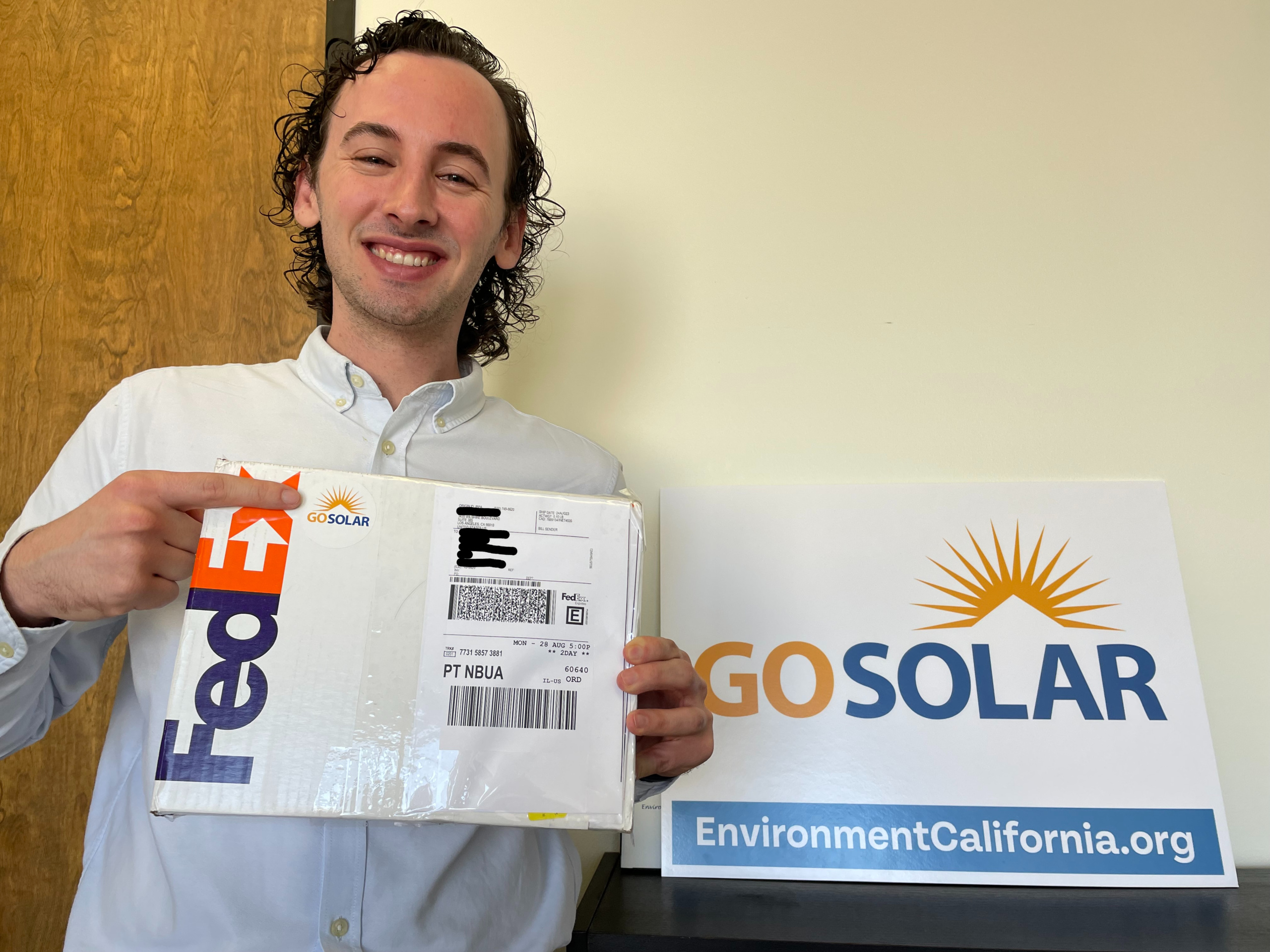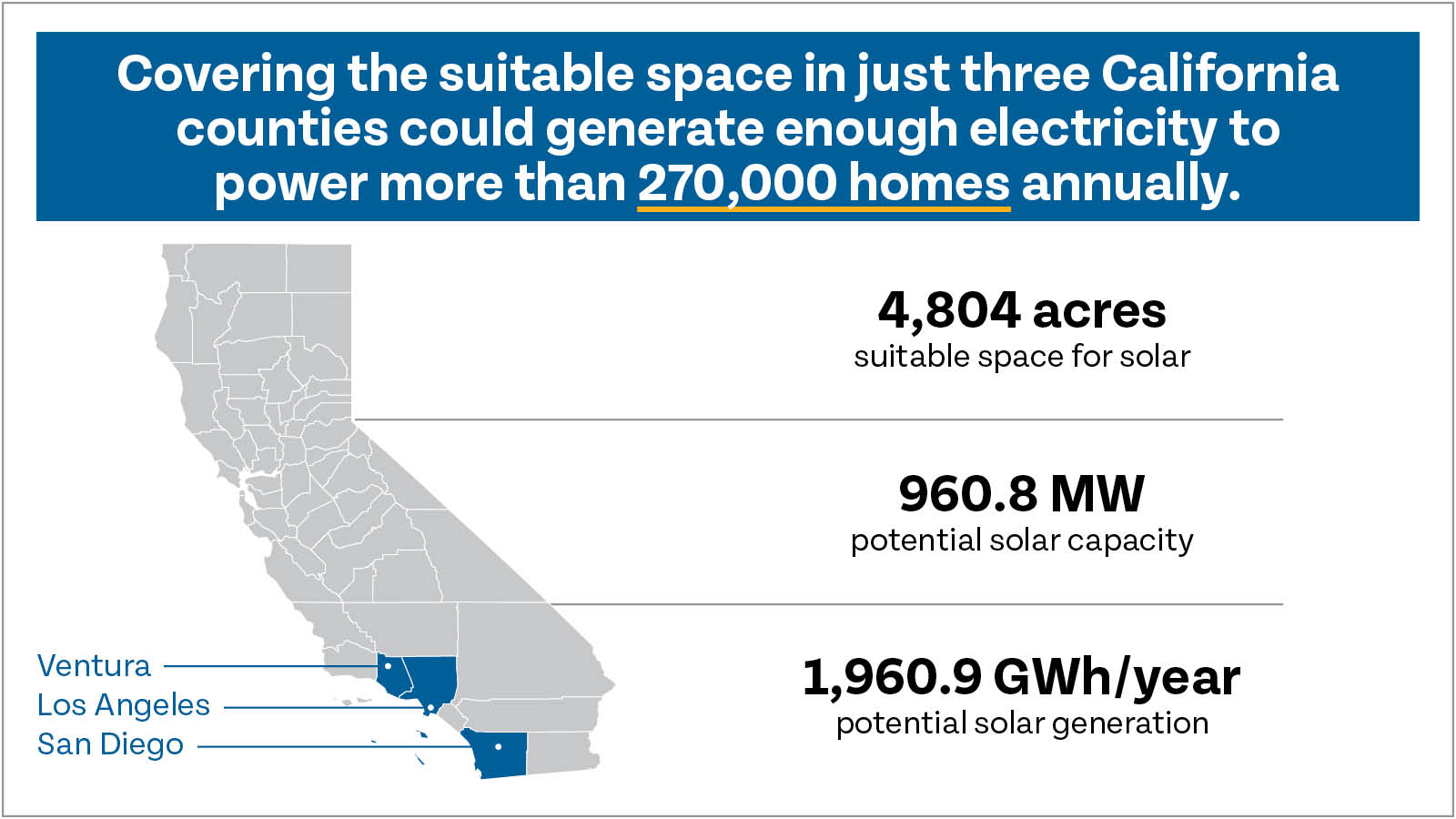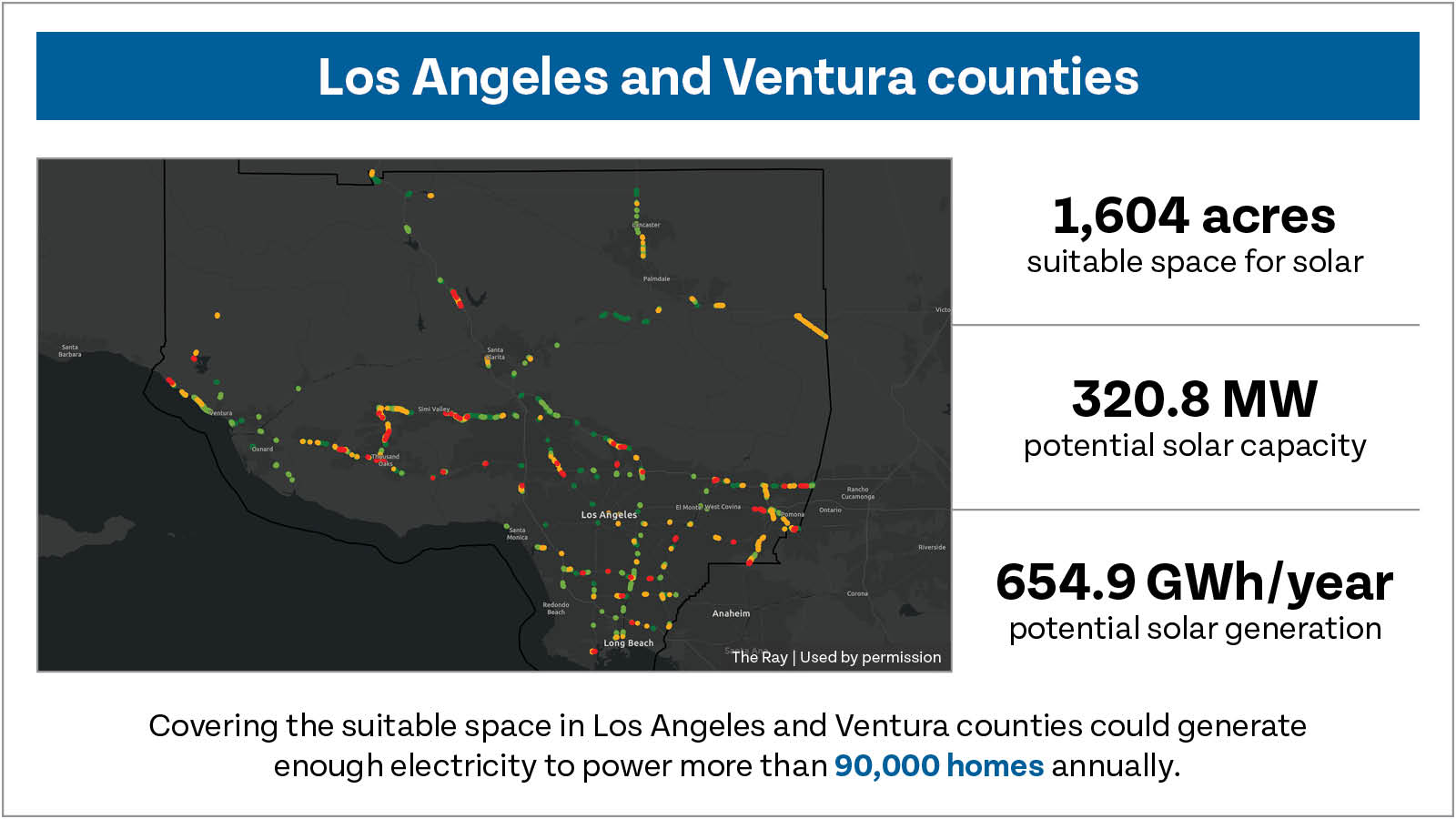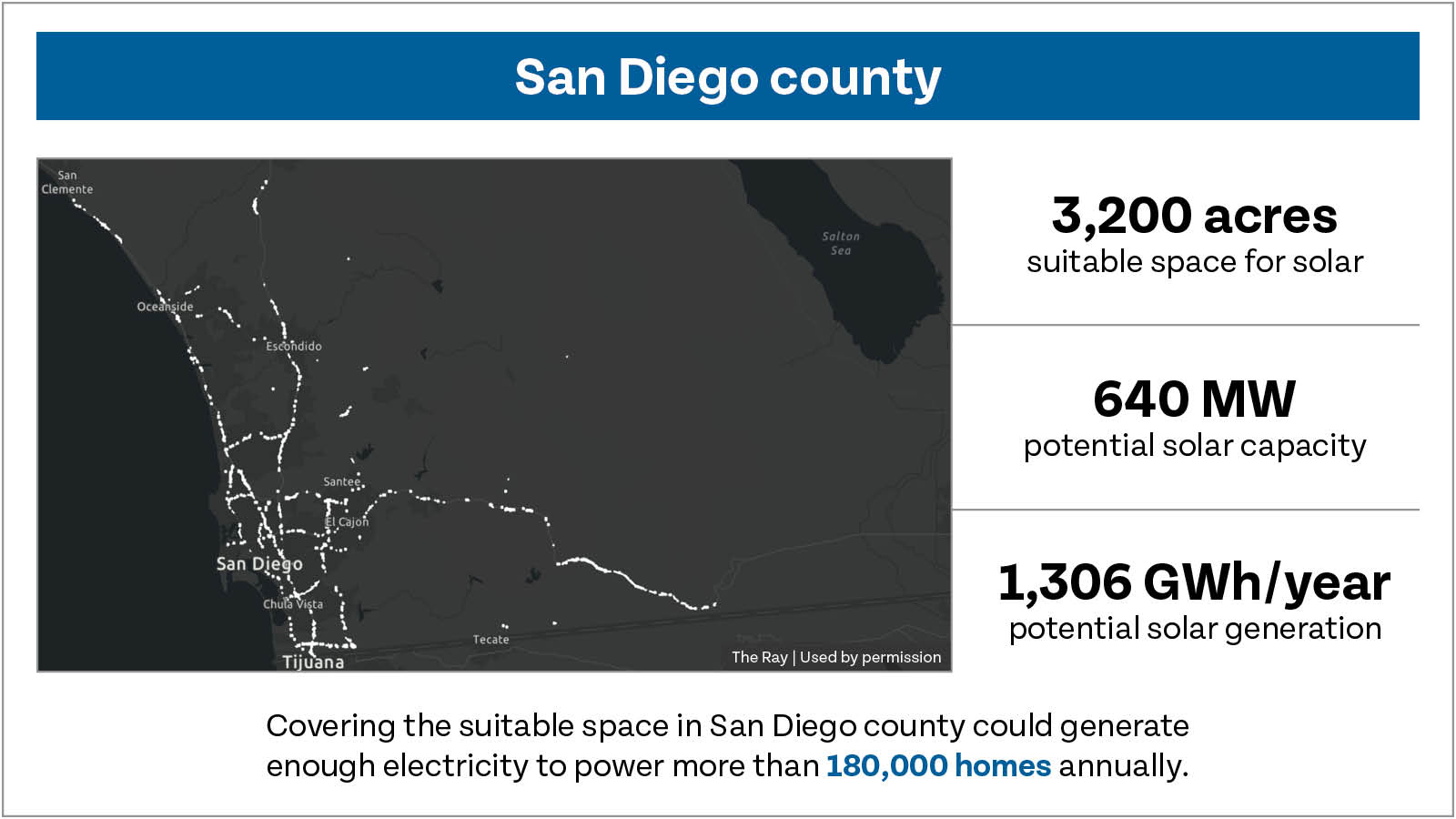
Solar power alongside California’s highways
California should take advantage of the vast, untapped solar energy potential next to its highways. New analysis of three counties identifies enough solar potential to power over 270,000 homes annually.
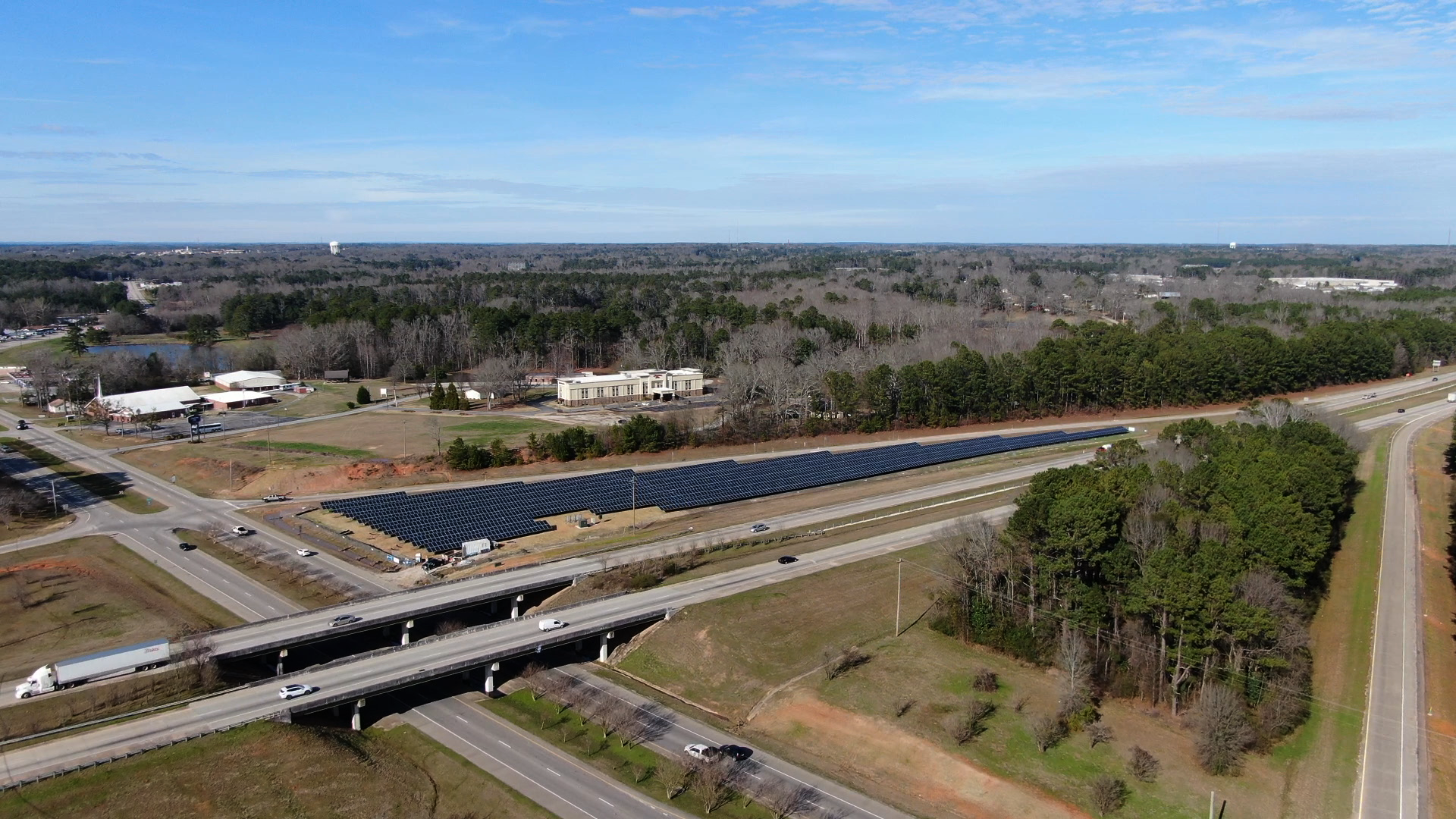
California has long been a leader in renewable energy and particularly in solar power. In 2021 the state ranked number one in the nation for solar energy generation. From a successful Million Solar Roofs initiative leading to more than 1.7 million solar roofs and counting, to a bold 100% clean energy commitment by 2045, California has continually been at the forefront of deploying renewable energy solutions. The state has also seen a 1,020% increase in battery storage capacity since 2020, which allows for the storage and use of solar energy once the sun sets each day. However, according to the California Energy Commission (CEC), the state still needs to triple the amount of solar power capacity it builds if we are to meet our crucial 100% clean energy target.
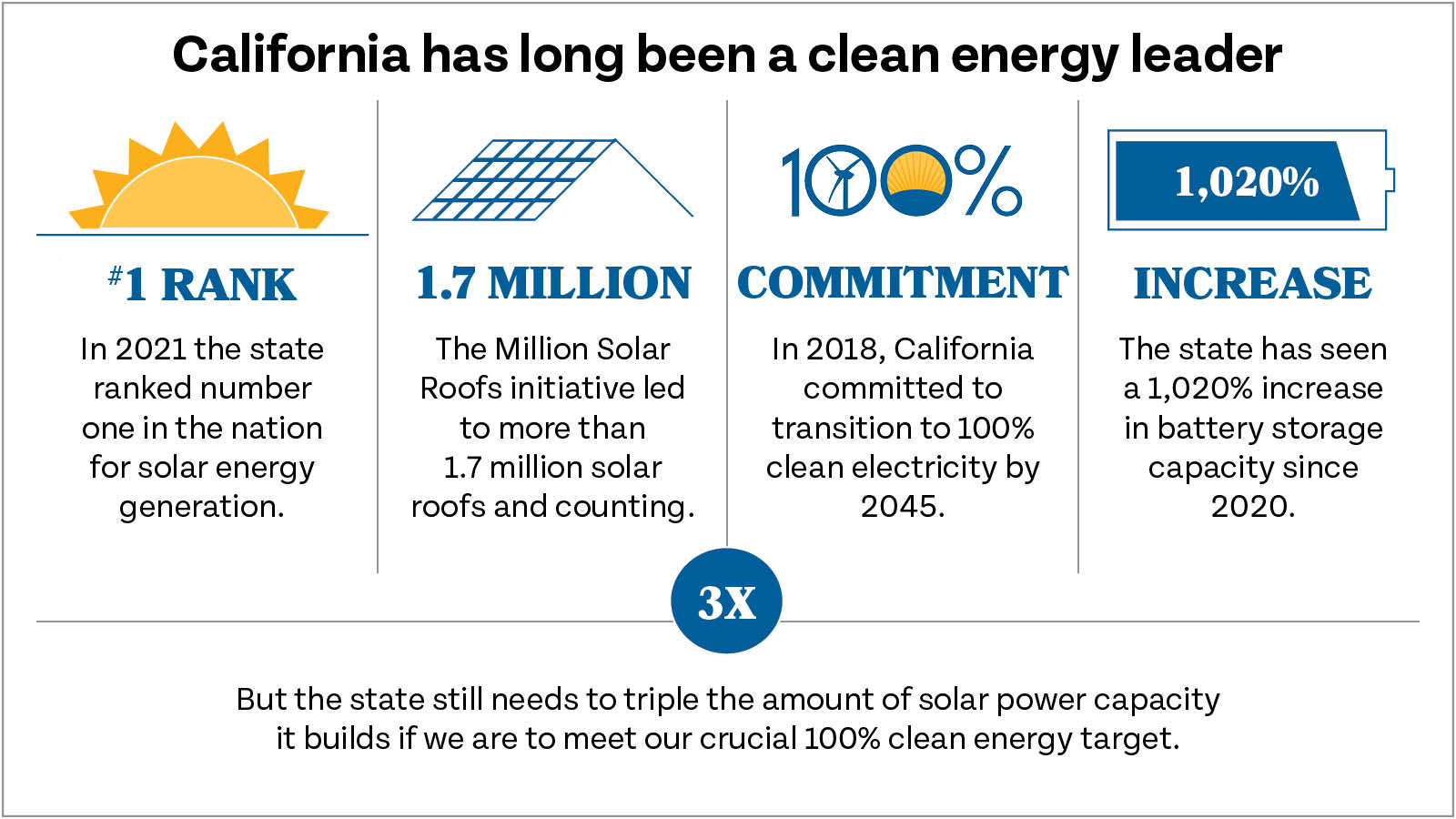
Solar power and battery storage are key clean energy tools that can help California transition away from dirty fossil fuels that pollute our air and disrupt our climate. Solar panels allow us to generate clean, renewable energy from the sun’s abundant rays. To quickly and sustainably achieve a future powered by 100% renewable energy, California must take advantage of untapped solar energy opportunities.
There’s still huge untapped solar potential next to highways
Based on new analysis conducted by The Ray, a Georgia based non-profit that supports state departments of transportation on solar project execution through solar suitability analyses and advising agencies on procurement and deployment processes, the three counties examined in Southern California have enormous solar potential within the state-owned right-of-way (ROW).
Together, the counties of Los Angeles, Ventura and San Diego have more than 4,800 acres of suitable space to develop solar power alongside highways, which if covered by solar panels could generate enough electricity to power over 270,000 homes annually. Installing solar panels in these roadside locations could add up to 960 MW of much-needed clean energy capacity and generate an estimated 1,960.9 GWh of electricity per year.
The total acreage available for solar power in these three counties represents the total technical potential if all suitable land was developed, and includes all land alongside highways not located in a zone excluded for safety, environmental, or other reasons. Areas excluded from the analysis include environmentally sensitive or protected lands, areas within roadway clear zones, and areas in close proximity to pipelines, transmission lines, and other infrastructure.
Picture this: Solar panels within a San Diego freeway interchange
Using prime areas identified by the tool’s suitability analysis, like this San Diego interchange where the Cabrillo Freeway and Clairemont Mesa Blvd. intersect, we can visualize what putting solar panels alongside California’s highways would look like.
Potential solar installation next to State Route 163 (The Cabrillo Freeway)
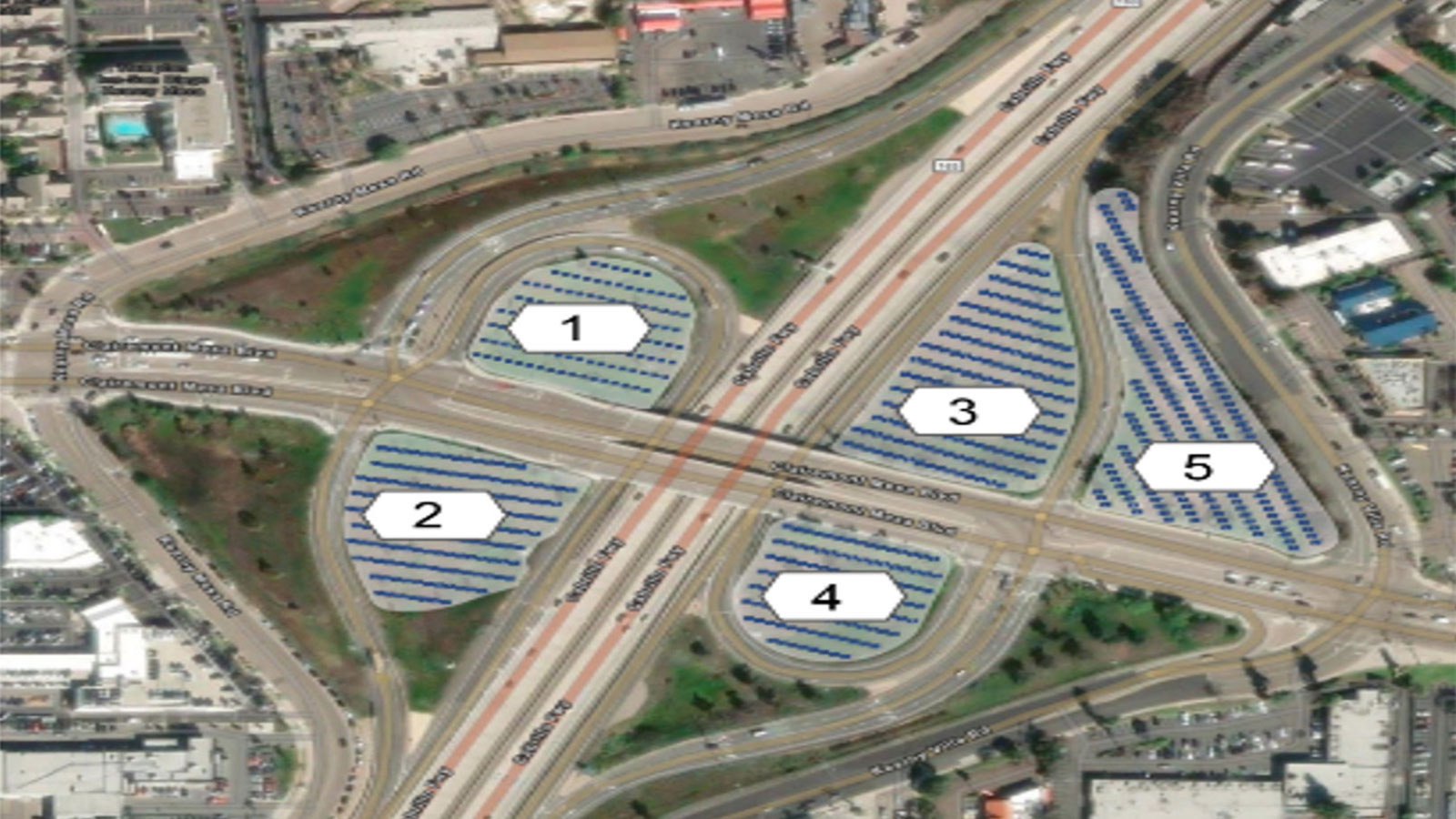
Total system size capacity: 1.86 MW
Photo by The Ray | Used by permission
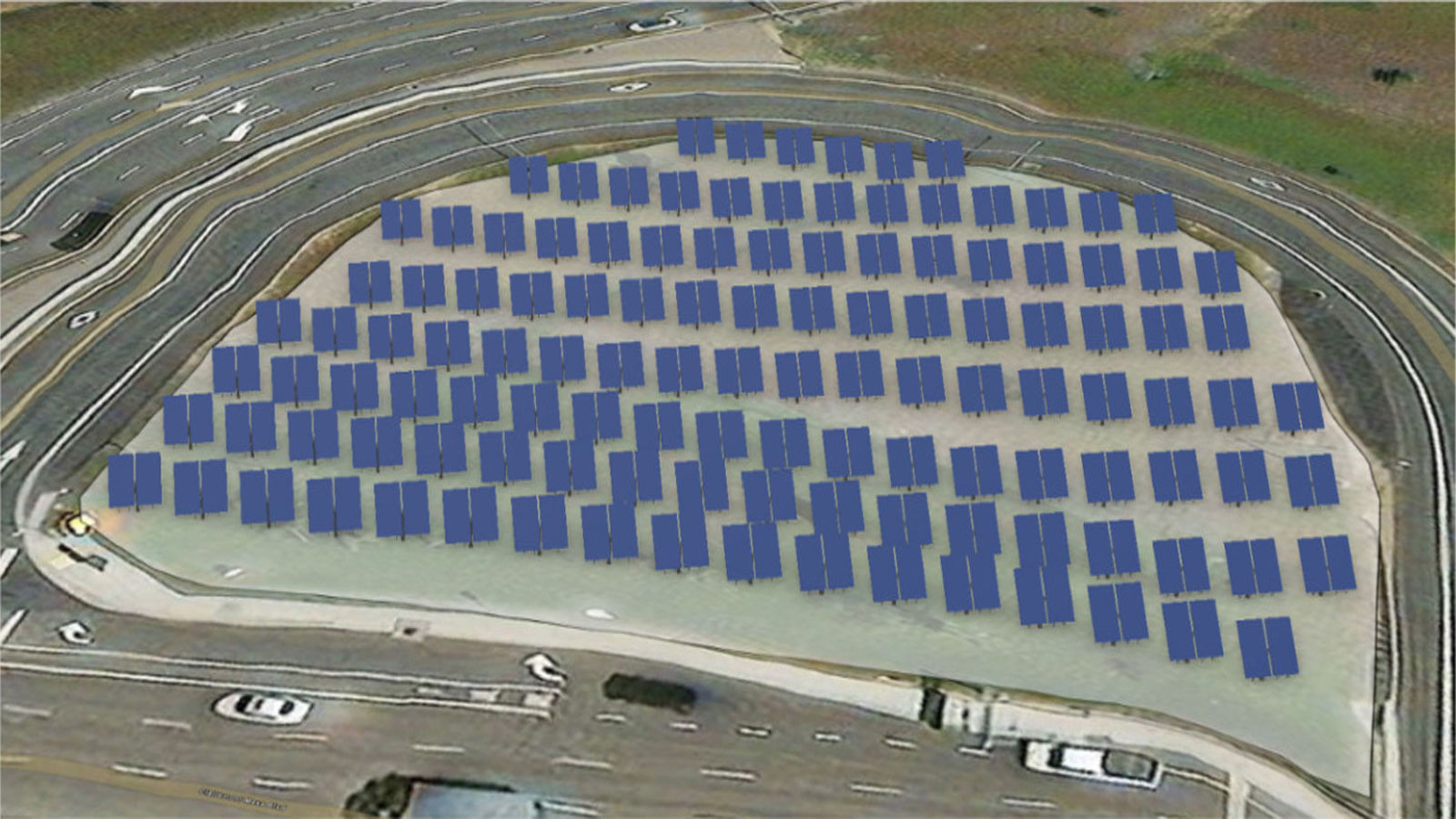
Site 1 - Suitability value: 6.0/10
Photo by The Ray | Used by permission
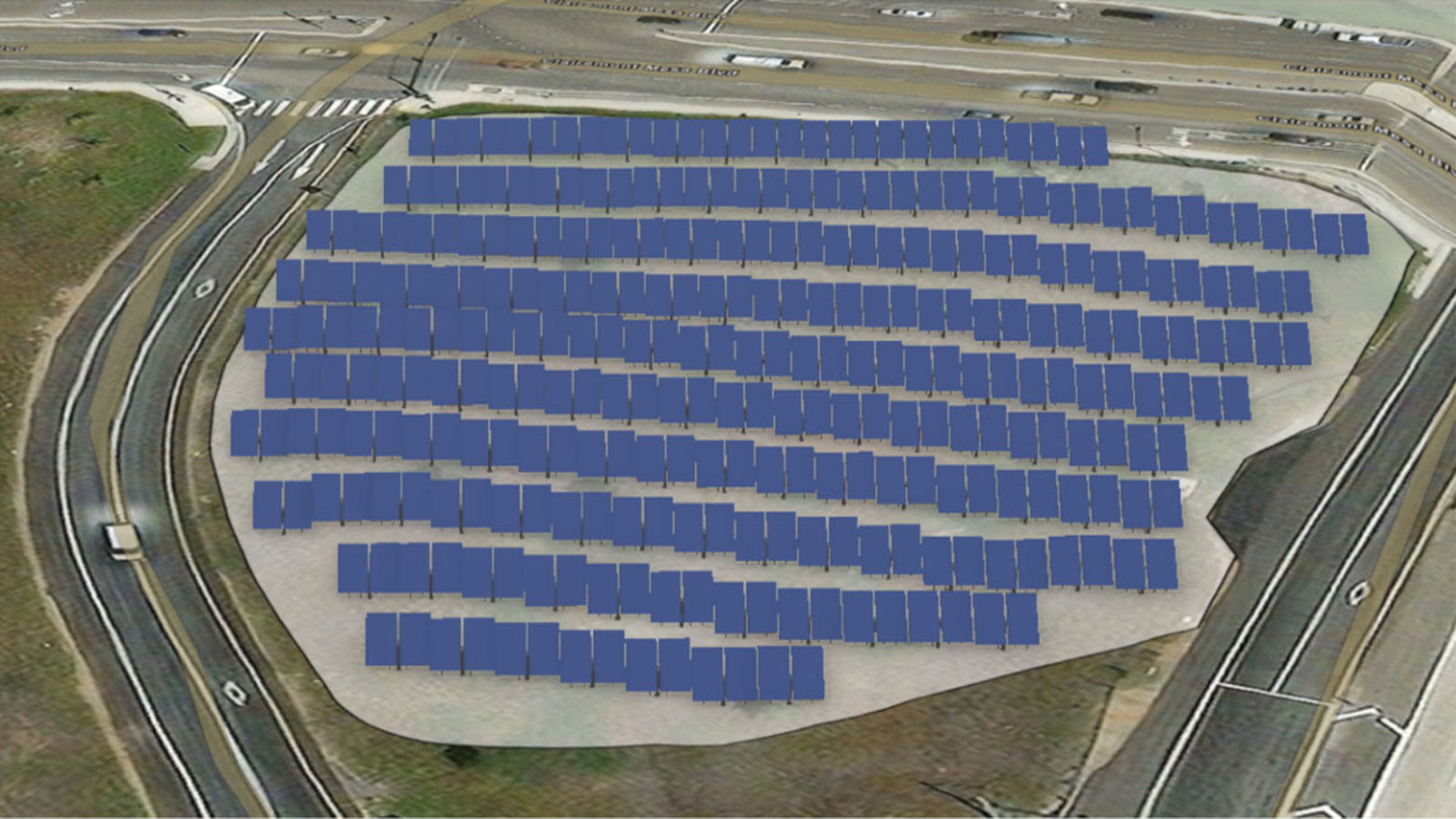
Site 2 - Suitability value: 8.8/10
Photo by The Ray | Used by permission
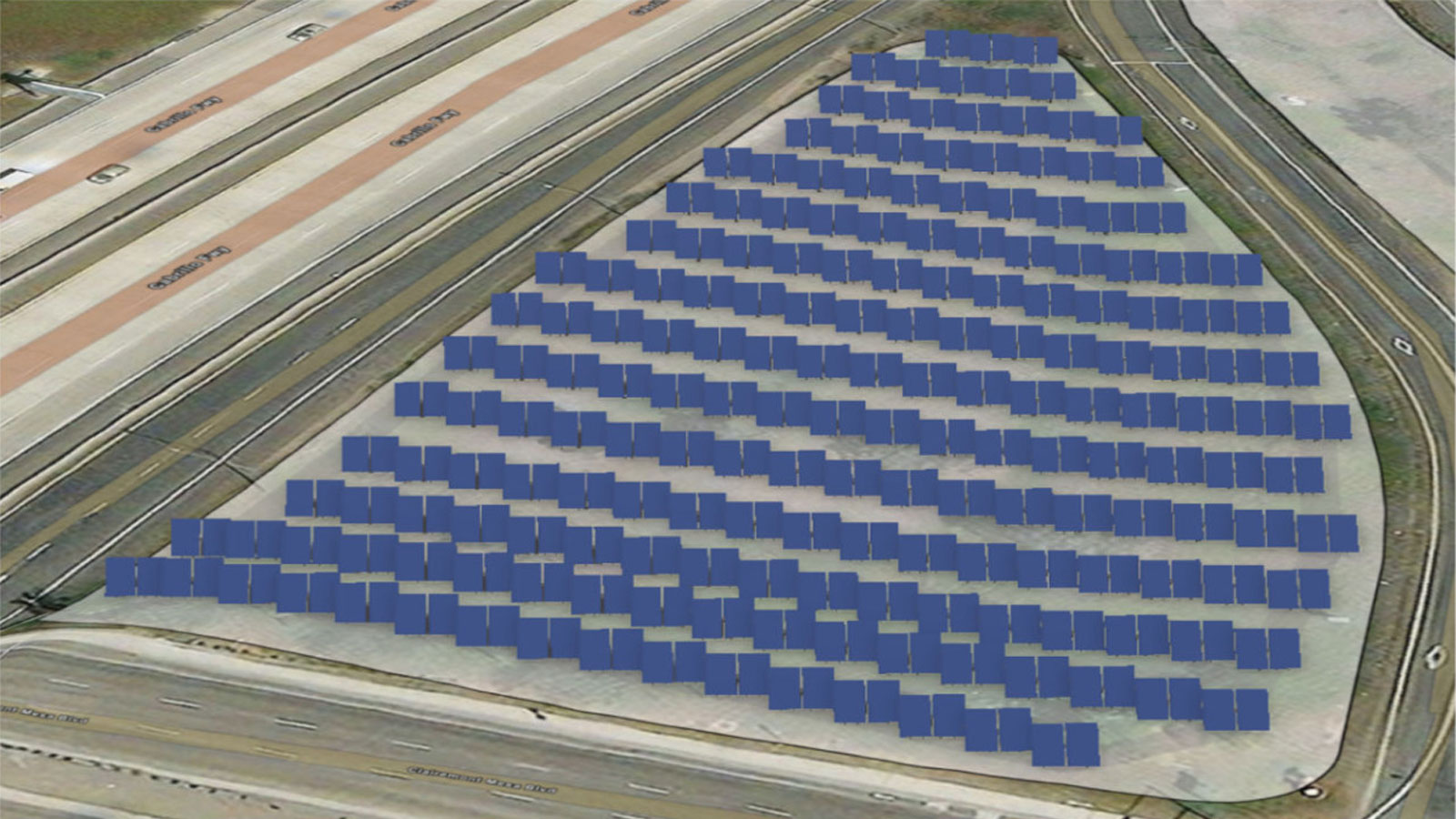
Site 3 - Suitability value: 7.1/10
Photo by The Ray | Used by permission
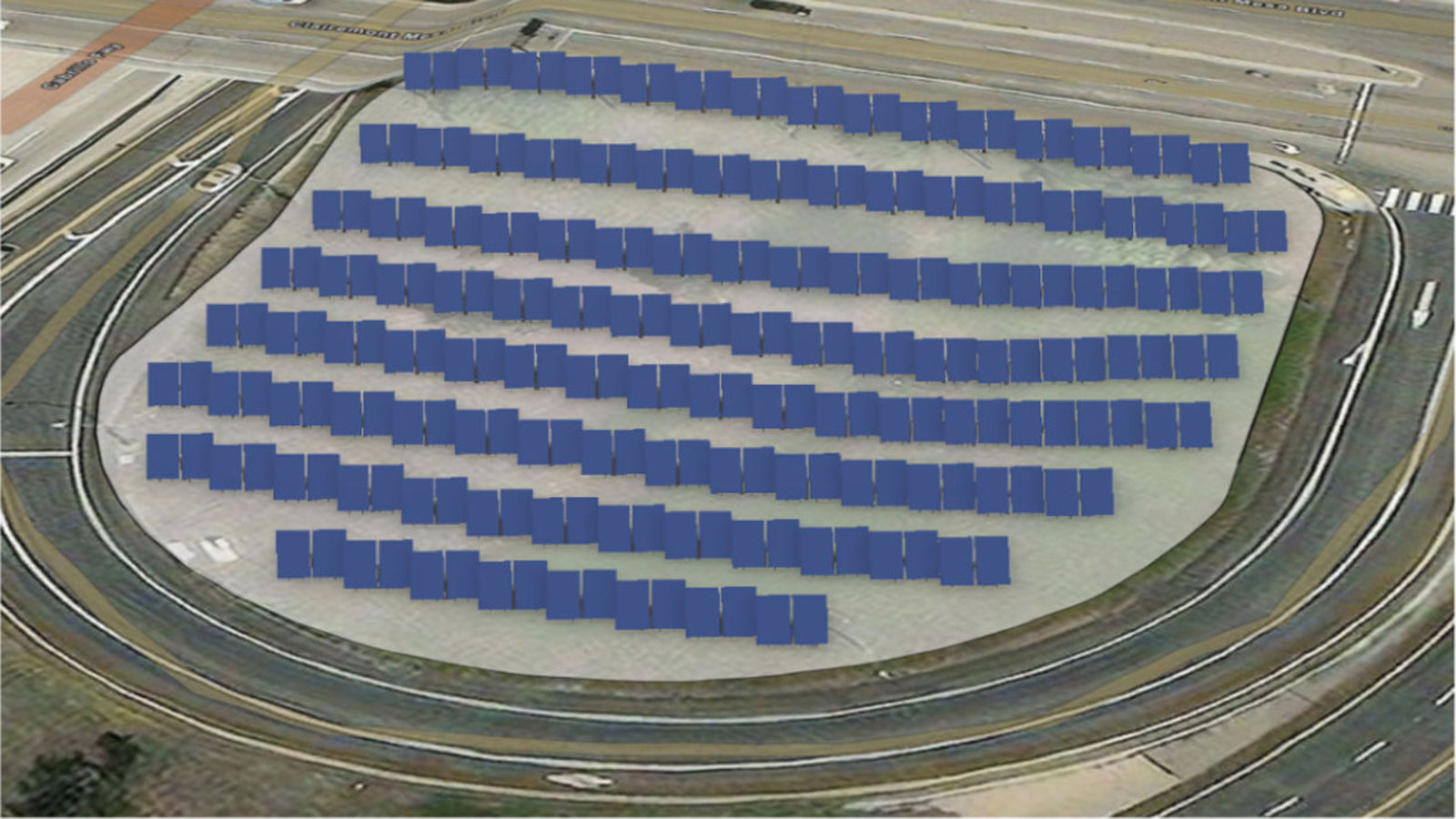
Site 4 - Suitability value: 7.8/10
Photo by The Ray | Used by permission
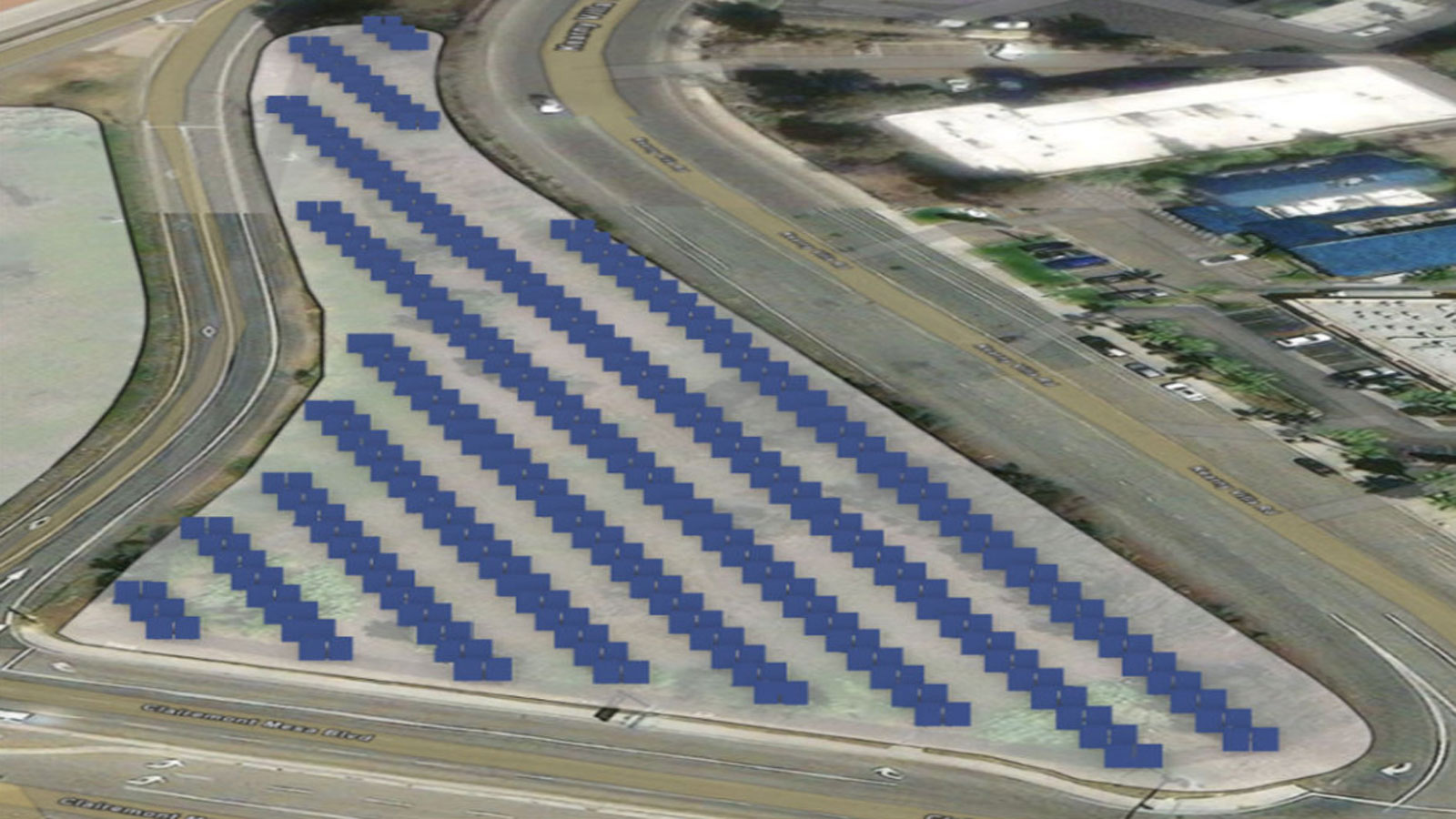
Site 5 - Suitability value: 7.3/10
Photo by The Ray | Used by permission
1of 6
Just this site alone could produce enough solar energy to power 180 homes for a year. Now imagine the huge clean energy potential if we scaled this approach throughout the entire state of California.
The benefits of solar alongside highways
Siting solar panels alongside highways brings a variety of benefits to local communities, the state, and Californians at large.
-
Increase speed and reduce conflict: One of the strongest benefits is that the state already controls all this idle land in its highway rights-of-way, which reduces conflicts and makes it easier to lease or otherwise develop sites for solar energy generation. Because these areas are controlled by the state and are often near existing transmission lines, panels can be built quickly along highways in comparison to large, utility-scale solar projects, which can take six years to complete and 13 years just to plan and construct necessary transmission lines that connect the power to the electric grid. Building solar infrastructure along highways, in already developed or disturbed areas, also avoids many of the land use and conservation concerns that come with siting large amounts of clean energy infrastructure in environmentally sensitive areas like California’s deserts.
-
Contribute to a clean energy future: Putting solar along highways can also contribute significantly to achieving a future powered by clean energy in California. Los Angeles, Ventura, and San Diego Counties have impressive solar power potential that, if fully realized, could generate significant clean, renewable energy that promotes cleaner air and fights climate pollution caused by burning fossil fuels for energy. Installing this solar along highways throughout the state can boost energy reliability, especially when extreme heat waves strain the electric grid, and expand the benefits of clean energy to all Californians. When paired with battery storage systems, these installations can continue providing clean energy to the electric grid even after the sun sets.
-
Save money and generate revenue: Solar along highways presents an opportunity for California to generate revenue from lease payments and electricity generation while potentially saving money by reducing ongoing roadside maintenance expenses. Solar developers can take on the responsibility of maintaining their sites along highways, which can reduce maintenance costs for the state.
-
Leverage the full productivity of existing highways: The Federal Highway Administration issued guidance in 2021 encouraging utilization of state rights-of-way for renewable energy generation. The agency notes that these projects help leverage the full productivity of existing highways, reduce pollution and greenhouse gasses, promote energy security and diversity, foster green jobs, create a potential state revenue source and reduce ongoing maintenance expenses. Additionally, the Biden Administration considers repurposing transportation rights-of-way for energy infrastructure like solar and transmission to be a “net-zero game changer” that can help the country meet its climate goals.
A proven solution
A 2020 research report commissioned by Caltrans provides guidance for installing solar generation facilities in its right-of-way and analyzes best practices, which can help California take advantage of solar opportunities alongside highways. Below are examples of solar installations alongside highways in other states.
Case Studies
Oregon
The Oregon Department of Transportation (ODOT) completed the nation’s first ROW solar installation in 2008 just outside of Portland. This project helped demonstrate the viability of developing solar arrays in the highway ROW, and led to the creation of ODOT’s solar highway program. In 2012, ODOT completed a second solar project, the Baldock Solar Station. Built at a safety rest area, the Baldock array is much larger than the initial demonstration project, consisting of almost 7,000 solar panels with a 1.75 MW capacity. In addition to the successful solar developments, the solar highway program led to the creation of a guidebook for how states can take their solar highway ideas from concept to implementation.
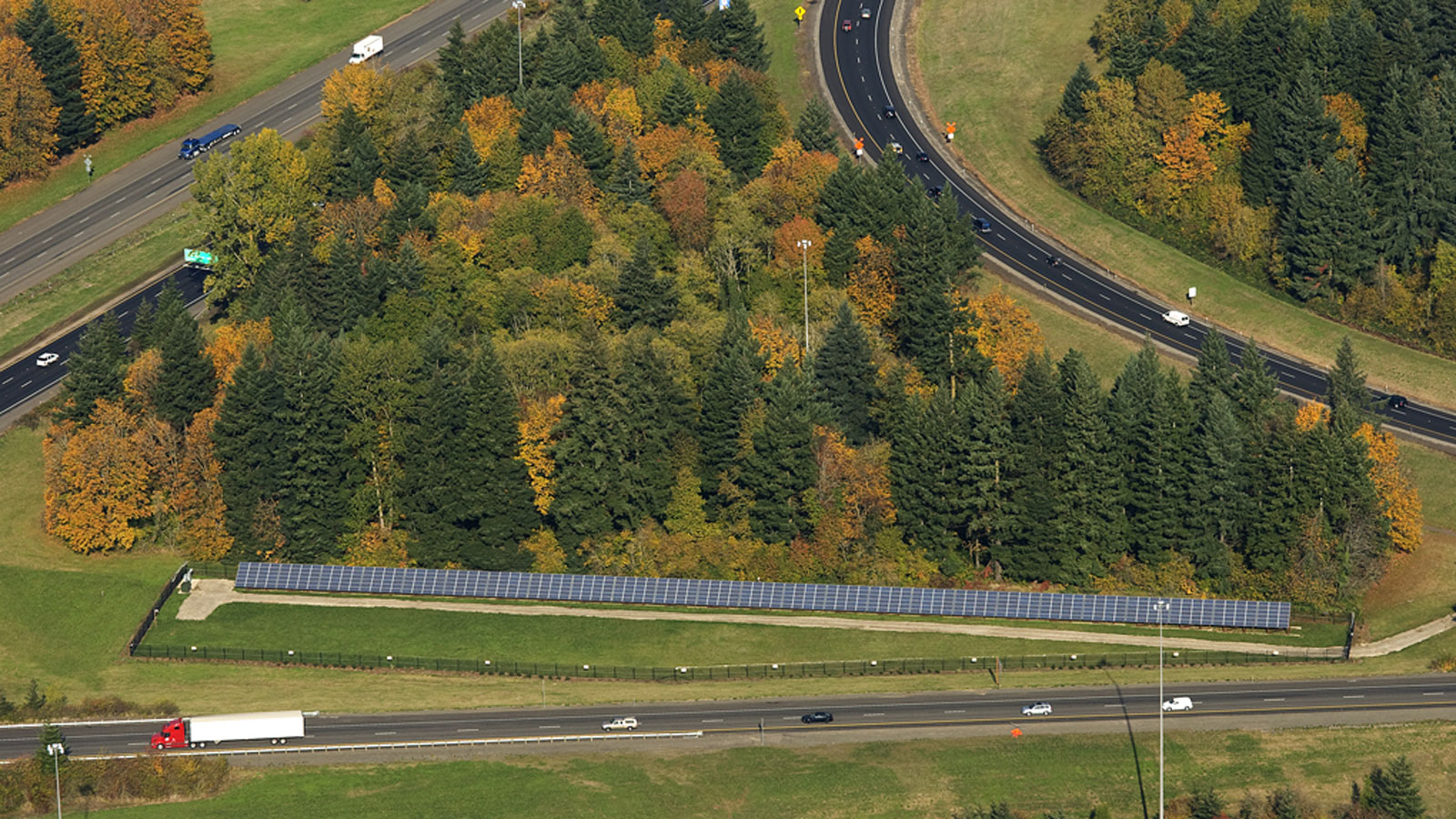
Solar highway installation outside Portland, Oregon.
Georgia
A portion of highway near LaGrange, Georgia along the southbound I-85, known as The Ray Highway, is home to a 5-acre 1 MW solar array commercialized in February 2022 on otherwise underutilized state-owned land. Constructed through a partnership between the Georgia Department of Transportation, Georgia Public Service Commission, and Georgia Power, The Ray developed this parcel of land to generate renewable energy that feeds directly into the state’s electricity grid. The Ray took a holistic approach in developing this site, supplementing the solar panels with native, pollinator-friendly wildflowers around the site to restore and promote the local ecology. This layered approach to sustainability in the ROW could be replicated in many places across the country, turning underutilized roadside land into environmentally-friendly hubs.
Maine
In August 2022, the Maine Department of Transportation (DOT) began construction on three solar ROW projects in Augusta. Completed in June 2023, the three projects have a solar capacity of 8.5 MW that powers the Capitol complex and additional facilities. In addition to providing renewable energy for state facilities, these solar projects will help reduce state carbon emissions by 2,000 metric tons annually, and reduce state electricity costs by at least $7.2 million over the next 20 years, according to Maine DOT. In addition to the solar deployment, Maine DOT planted pollinator-friendly plants in the ground surrounding the panels, supporting the robust pollinator population.

Solar highway installation in Augusta, Maine.Photo by Maine DOT | Public Domain
California should go solar alongside its highways
This new analysis of Los Angeles, Ventura, and San Diego counties suggests that California is primed to take a monumental step towards sustainability by going solar along its highway system. Leveraging these untapped areas in Los Angeles, Ventura, and San Diego can generate significant amounts of clean energy, not to mention the potential solar generation of California’s other 55 counties. To help counter the risk of blackouts and boost local energy reliability, these solar installations can also include battery storage capacity. California can utilize The Ray’s solar analysis pre-planning tool to analyze solar suitability next to highways and quickly make plans to develop solar in these prime locations. Let’s drive towards a future powered by clean energy in California by putting solar panels alongside our highways.
Methodology and exclusion criteria
The Ray obtained data on state-controlled roadside parcels from the California Department of Transportation (Caltrans) website, which it analyzed using a software tool developed by California-based geographic information system (GIS) company Esri. The analysis rules out many areas based on safety, environmental, and other standard criteria and looks at additional key variables to determine suitability for solar panels alongside California’s highway rights-of-way.
Using standard exclusion criteria, The Ray’s analysis only considers areas outside of conserved lands, environmentally sensitive areas, habitat mitigation sites, national parks and forests, protected areas, high-risk flood zones, and wetlands. It also excludes areas within 500 meters of natural gas, HGL, and crude oil pipelines, within 50 feet of transmission lines, within 20 feet of rail lines, and outside of the 40-foot roadway clear zone.
Once these areas are excluded, suitability analysis looks at critical variables that determine solar panel productivity including solar radiation, aspect, and slope of the remaining roadside parcels. Solar radiation is based on the insolation – or the exposure to the sun’s rays – across the parcel. Slope is the rate of change of elevation, and aspect is the direction of the slope. Not all sites are ideal for solar panels after factoring in these variables, but many roadside locations are prime contenders for installing solar panels. There will be other limitations for some parcels, and a complete engineering design will be needed for any site, but the analysis presents a clear picture of the solar potential in these regions.
Currently, analysis has been completed for three Southern California counties based on data availability, and the rest of the state’s roadside spaces will be analyzed as more data becomes available. The results of The Ray’s solar analysis are intended to provide general information to state Departments of Transportation for pre-planning purposes, and are not intended to replace site analysis and other planning, design, and engineering work to determine suitability of a given parcel for solar development.
Topics
Authors
Steven King
Clean Energy Advocate, Environment California Research & Policy Center
Steven leads Environment California’s campaigns to increase clean, renewable energy throughout the Golden State, spearheading efforts to transition away from dangerous fossil fuels and address climate change. Steven lives in Los Angeles where he enjoys spending time outdoors, watching his favorite L.A. sports teams, and playing the trombone.
David Peters
Western Regional Manager, The Ray
Find Out More
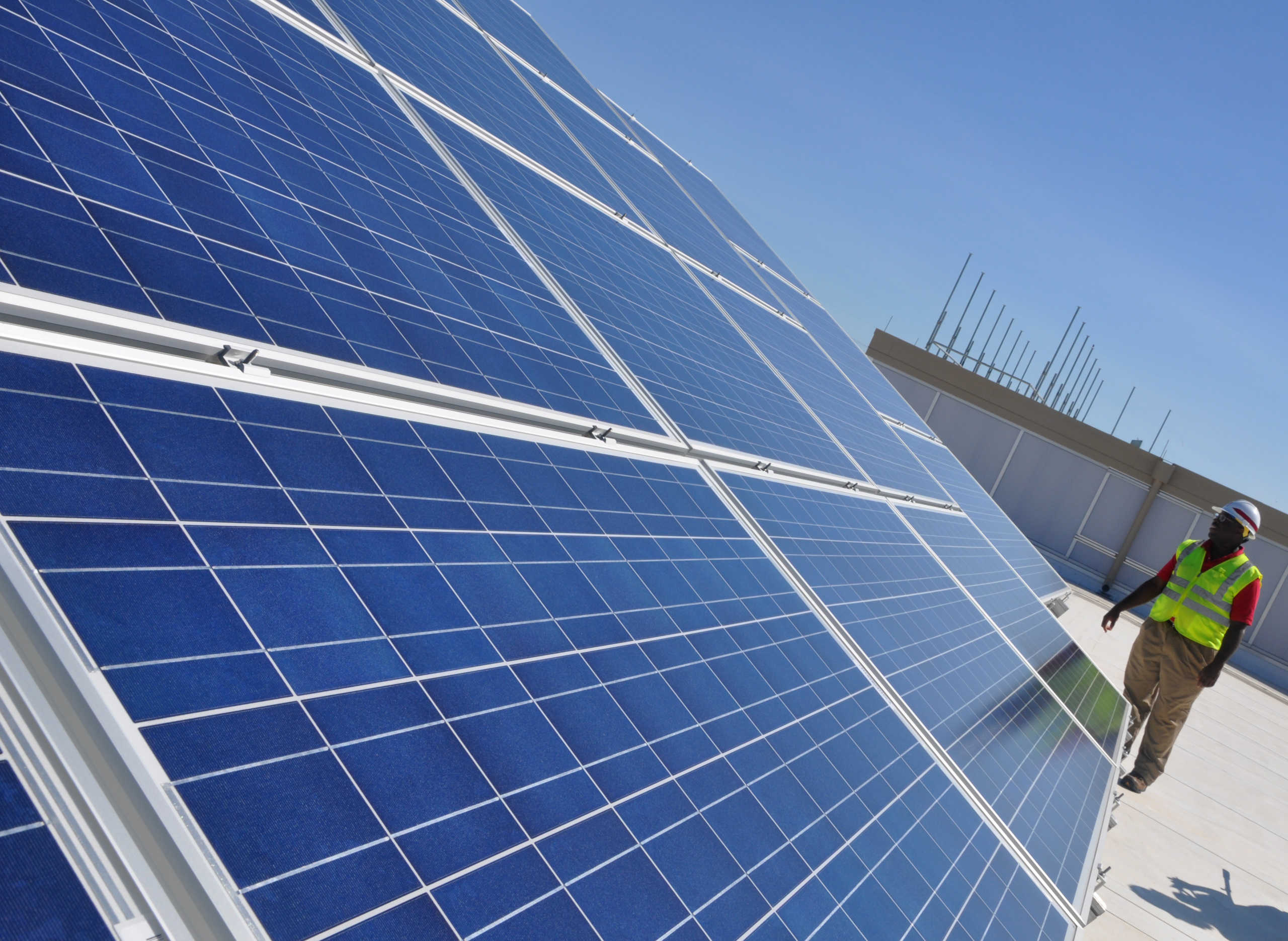
Unlocking America’s rooftop solar potential

We brought FedEx’s golden solar opportunity to their doorstep
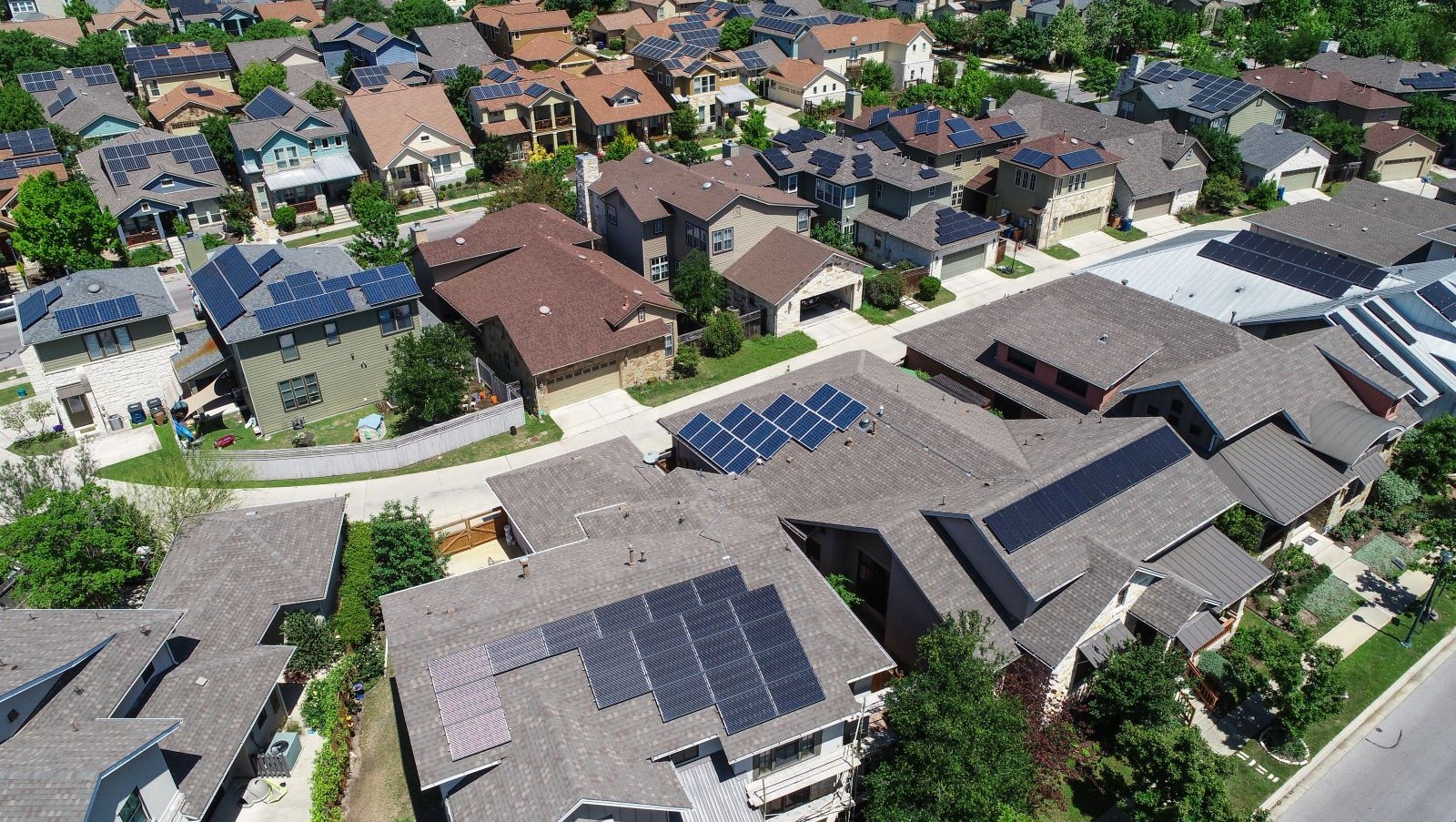
It’s time to save rooftop solar in California
